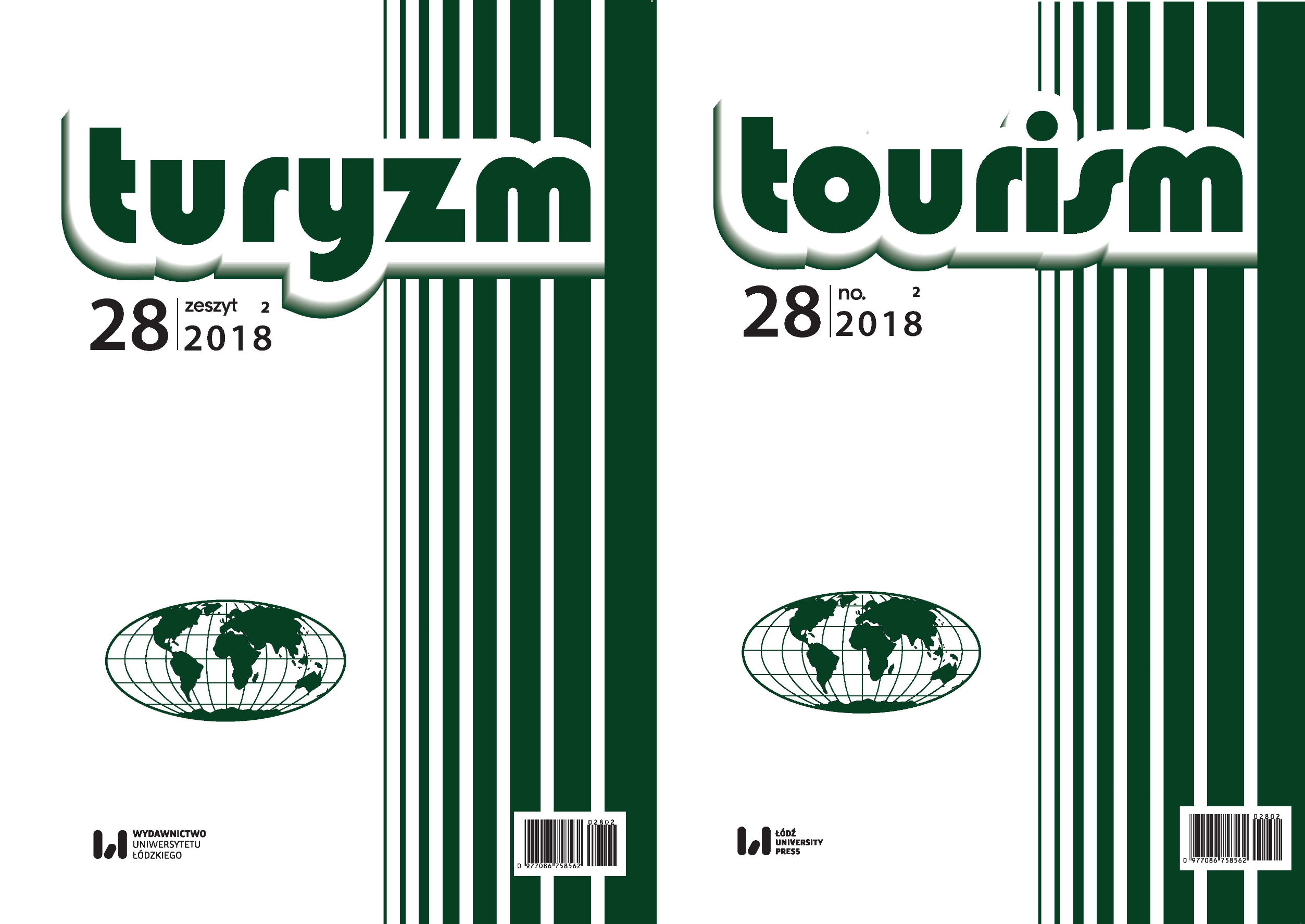Cultural tourism facilities in the context of the increased risk of terrorism: Young tourists from Lithuania and security measures
DOI:
https://doi.org/10.2478/tour-2018-0018Keywords:
tourist infrastructure, risk of terrorism, tourists’ securityAbstract
In view of the events that have been taking place in recent years, tourism security issues have become a popular subject in academic research. Terrorism attacks in trendy tourism destinations have raised a significant question: how can the tourist be protected and provided with quality? The article presents an evaluation of the significance of ‘soft’ and ‘hard’ security measures used in cultural tourism facilities by young tourists from Lithuania. The research showed that young tourists belong to the group of ‘courageous’ travellers, but their bravery has a limit. Young people want to travel ‘without restrictions’, feeling free, but they also want to know that someone has taken care of their safety.
Downloads
References
BARTON C., HAYWOOD J., JHUNJHUNWALA P., BHATIA V., 2013, Travelling with Millennials. The Boston Consulting Group, http://www.bcg.com/documents/file129974.pdf.
Google Scholar
BERNAŚ B., PUJER K., 2014, Bezpieczeństwo i zagrożenia w turystyce, The Wroclaw School of Banking Research Journal, 15, 2, pp. 223-243.
Google Scholar
BUFFA F., 2015, Young tourists and sustainability. Profiles, attitudes, and implications for destination strategies, Sustain-ability, 7, s. 14042-14062.
Google Scholar
GARG A., 2015, Travel risks vs tourist decision making: A tourist perspective, International Journal of Hospitality & Tourism Systems, 8 (1), pp. 1-9.
Google Scholar
HENDERSON J.C., 2007, Tourism crises: causes, consequences and management, Elsevier, Amsterdam.
Google Scholar
HORNER S., SWARBROOKE J., 2009, International cases in tourism management, Elsevier, Amsterdam.
Google Scholar
How Millennials killed travel marketing as we know it, http://www.mdgadvertising.com/e-books/How-Millennials-Killed-Travel-Marketing/Millennial-Traveler-Ebook.pdf.
Google Scholar
MACHADO A., 2014, How Millennials are changing travel, https://www.theatlantic.com/international/archive/2014/06/howmillennials-are-changing-international-travel/373007/.
Google Scholar
MANSFELD Y., PIZAM A., 2006, Tourism, security and safety: from theory to practice, Elsevier, Amsterdam.
Google Scholar
MARCZAK M., 2012, Wpływ terroryzmu na rozwój turystyki międzynarodowej, Zeszyty Naukowe Uniwersytetu Szczecińskiego. Ekonomiczne Problemy Turystyki, 4, 20, pp. 89-102.
Google Scholar
MOISĂ C.O., 2010, Aspects of the youth travel demand, Annales Universitatis Apulensis Series Oeconomica, 12 (2), pp. 575-582.
Google Scholar
MORRISON G., FERNANDES L., HAYASHI C., 2016, Millennial traveller report. Factory & expedia, https://www.foresightfactory.co/wp-content/uploads/2016/11/Expedia-Millennial-Traveller-Report-Final.pdf.
Google Scholar
MURA P., 2010, ’Scary... but i like it!’ Young tourists’ perceptions of fear on holiday, Journal of Tourism and Cultural Change, 8 (1-2), pp. 30-49.
Google Scholar
PACZYŃSKA-JĘDRYCKA M., EIDER J., 2017, Turystyka w obliczu terroryzmu, Handel Wewnętrzny, 4 (369), pp. 196-205.
Google Scholar
red24’s Global terrorism risk map 2017, https://opinion.red24.com/2017/01/10/red24s-global-terrorism-risk-map-2017/.
Google Scholar
SANTANA G., 2005, Globalisation, safety and national security, [in:] W. Salah, C. Cooper (eds.), Tourism in the age of globalisation, Routledge, London, New York, pp. 213-241.
Google Scholar
SCHROEDER A., PENNINGTON-GRAY L., KAPLANIDOU K., ZHAN F., 2013, Destination risk perceptions among US residents for London as the Host City of the 2012 Summer Olympic Games, Tourism Management, 38, pp. 107-119.
Google Scholar
SURVILA A., MIKĖNAS E., ŽUROMSKAITĖ B., 2017, The impact of terrorism on the tourism sector of Lithuania, Montenegrin Journal of Economics, 13, 3, pp. 101-118.
Google Scholar
TARLOW P., 2006, A social theory of terrorism and tourism, [in:] Y. Mansfeld, A. Pizam (eds.), Tourism, security and safety: from theory to practice, Elsevier, Amsterdam, pp. 33-48.
Google Scholar
TARLOW P., 2014, Reflective epilogue: concerns in tourism safety, International Journal of Religious Tourism and Pilgrimage, 2, pp. 68-70.
Google Scholar
Travel risk and reality. The new normal for business 2016; https://www.internationalsos.com/risk-outlook.
Google Scholar
ŽUROMSKAITĖ B., NAGAJ R., DAČIULYTĖ R., 2018, Source of information on the perceived risk and safety in the tourism Industry, [in:] N. Grünwald, M. Zakrzewska (eds.), Series of the Robert-Schmidt-Institut: Proceedings of the 5th International Scientific Conference on ”Modern Economics”, University of Wismar, Wismar, pp. 179-185.
Google Scholar
Downloads
Published
How to Cite
Issue
Section
License

This work is licensed under a Creative Commons Attribution-NonCommercial-NoDerivatives 4.0 International License.










